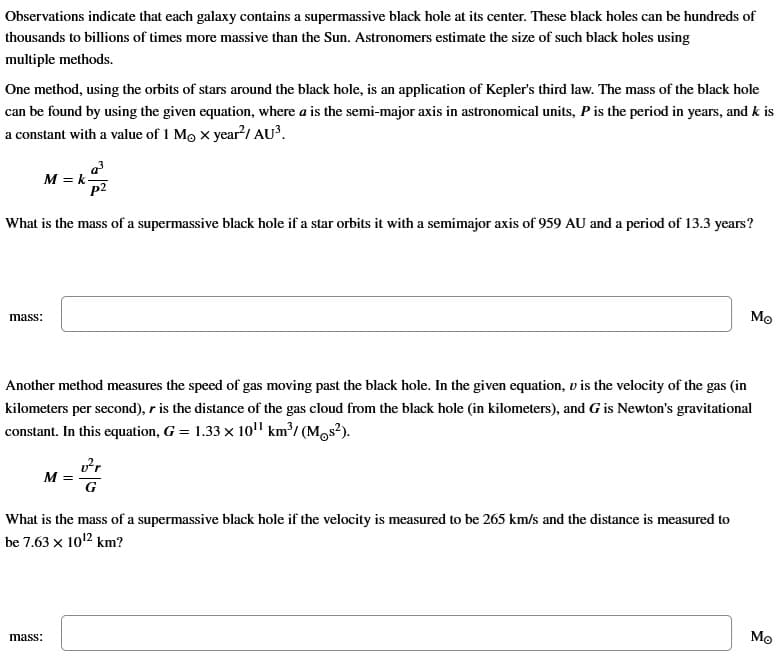Observations indicate that each galaxy contains a supermassive black hole at its center. These black holes can be hundreds of thousands to billions of times more massive than the Sun. Astronomers estimate the size of such black holes using multiple methods. One method, using the orbits of stars around the black hole, is an application of Kepler's third law. The mass of the black hole can be found by using the given equation, where a is the semi-major axis in astronomical units, P is the period in years, and k is a constant with a value of 1 Mo X year² / AU³. a³ M = k- p² What is the mass of a supermassive black hole if a star orbits it with a semimajor axis of 959 AU and a period of 13.3 years? mass: Another method measures the speed of gas moving past the black hole. In the given equation, v is the velocity of the gas (in kilometers per second), r is the distance of the gas cloud from the black hole (in kilometers), and G is Newton's gravitational constant. In this equation, G = 1.33 × 10¹¹ km³/(Mos²). M v²r G What is the mass of a supermassive black hole if the velocity is measured to be 265 km/s and the distance is measured to be 7.63 x 10¹2 km? mass: Mo Mo
Stellar evolution
We may see thousands of stars in the dark sky. Our universe consists of billions of stars. Stars may appear tiny to us but they are huge balls of gasses. Sun is a star of average size. Some stars are even a thousand times larger than the sun. The stars do not exist forever they have a certain lifetime. The life span of the sun is about 10 billion years. The star undergoes various changes during its lifetime, this process is called stellar evolution. The structure of the sun-like star is shown below.
Red Shift
It is an astronomical phenomenon. In this phenomenon, increase in wavelength with corresponding decrease in photon energy and frequency of radiation of light. It is the displacement of spectrum of any kind of astronomical object to the longer wavelengths (red) side.

Trending now
This is a popular solution!
Step by step
Solved in 4 steps with 3 images







